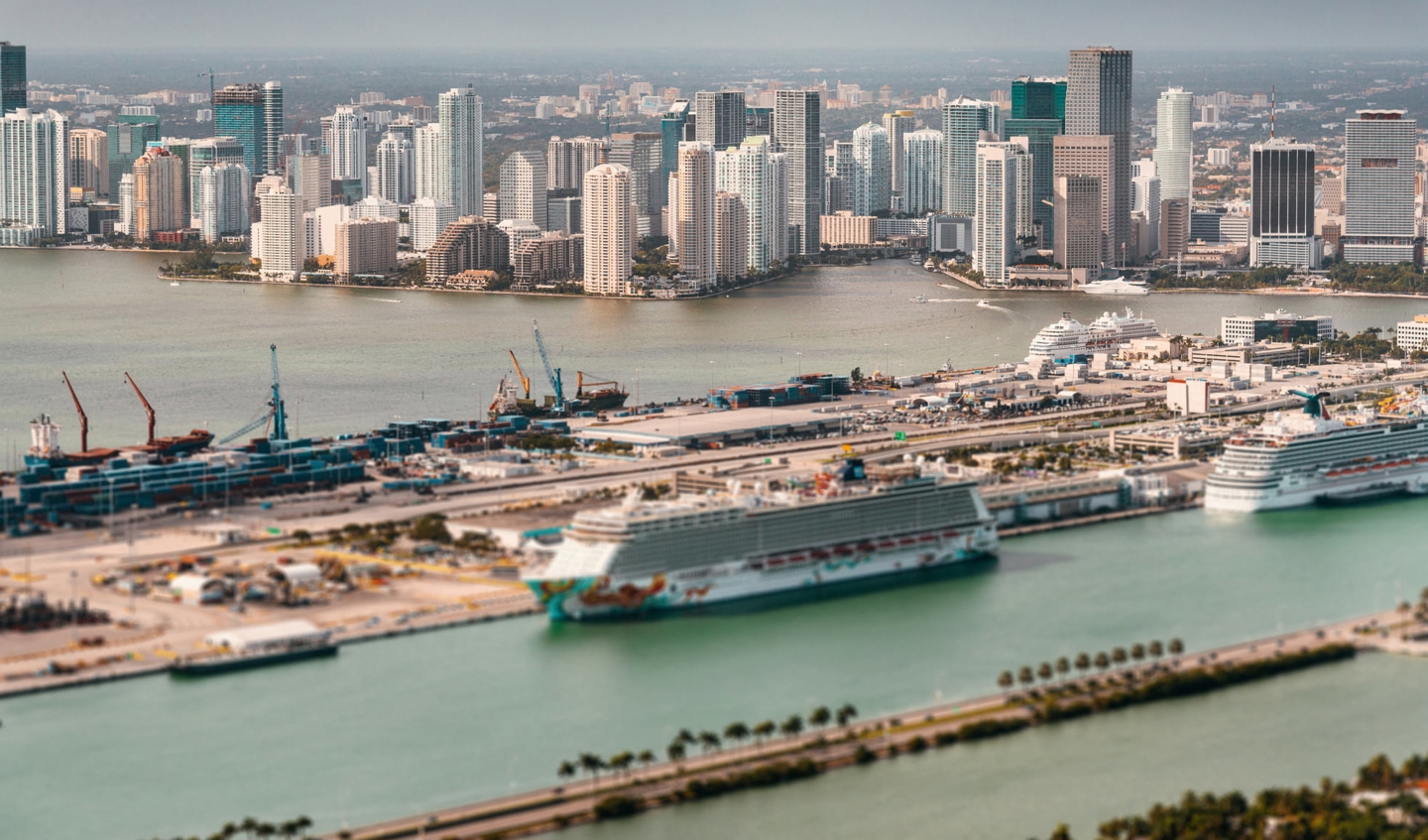If a port is planning to provide an onshore power supply (OPS), how much electricity will it need and where will it come from? Simple questions, with complicated answers. Cruise ships are particularly power-hungry, thanks to their large hotel loads. 98% of the sector’s order book over the next five years is scheduled to be either fitted or be ready for retrofitting with facilities to connect to shore-side electrical power systems, according to the Cruise Lines International Association.
A large cruise ship is likely to draw at least 5MW, perhaps approaching 10MW. For a hub port that might have up to 10 ships berthing on changeover day, the total power demand could be 100MW.
Duncan Duffy, Lloyd’s Register’s Global Head of Technology, Electrotechnical Systems, puts that in perspective. It equates to the entire output of a medium-sized windfarm operating at full capacity.
That comparison is important because if the aim is to reduce GHG emissions, there is no benefit if the shore power comes entirely from hydrocarbon energy. In reality, there is likely to be different proportional environmental benefit available from any onshore supply, since the proportion produced from renewable sources varies; in Europe it about 50%, rising to around 75% in regions such as Norway, where hydropower is readily available.
Nuclear power stations also deliver low-carbon energy into the grid, so ports in locations where that is available might be able to claim their shore supply offers an environmental advantage over a ship running its own engines. But Joep Bollerman, Lloyd’s Register’s Miami-based Global Passenger Ship Manager, pointed out that existing nuclear power stations would have been built to meet land-based power demands, so “are we going to turn off a city’s power just because we want to provide green electricity to ships in its port?”
Regulatory forces
In the years to come, ports in some regions of the world will be required to provide an OPS, so the questions posed at the start of this article cannot be ignored.
The EU’s Climate Law, for example, includes a target of reducing the bloc’s GHG emissions by at least 55% by 2030, with a goal of climate neutrality by 2050. In July 2021, the European Commission put forward some legislative proposals, called the ‘Fit for 55’ package, to achieve the first of those targets and, for shipping, these will require investment in OPS.
Those proposals form part of the FuelEU Maritime regulation, which addresses both fuel supplies and OPS. A final version of the proposed rules was agreed in March by the European Council and European Parliament and will initially require passenger ships and container ships of at least 5,000gt to connect to OPS at major EU ports from 2030 and at all EU ports with onshore power supplies from 2035. There will be exceptions for stays of less than two hours and for ships that use zero-emission technology at berth.
According to an analysis published in April 2022 by the European Parliamentary Research Service, the European Commission estimates that investment totalling €7.4 billion will be needed in OPS facilities over the 2025-2050 period.
In California, compliance requirements for the state’s 2020 At Berth Regulation went into effect on 1 January. That regulation views shore power as “the gold standard in reducing emissions from ocean-going shipping” and the California government states in its online FAQs about the regulation that – with some exceptions – shore power capable vessels “must connect to shore power in order to comply with the 2020 Regulation.”
A number of other North American ports are fitted with OPS infrastructure. Some of the large US cruise ports in Florida, including Miami and Port Canaveral – are making plans to install shore power.
While other regions may not have the regulatory demands that underlie Europe’s and California’s interest in OPS, other locations are exploring its potential and Horizons is aware of ports in China, India, South Korea and Taiwan that have already invested in the technology. In Scandinavia, a number of short ferry routes are now fully electric, using dedicated shore power installations.
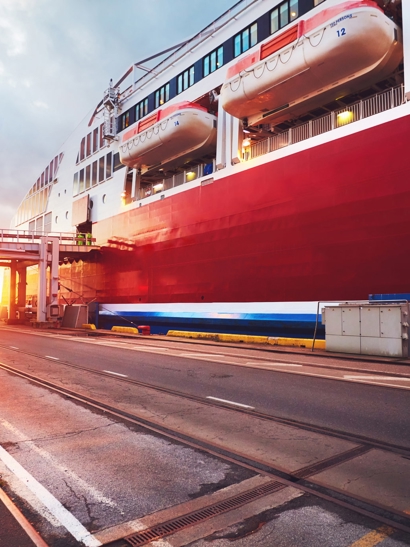
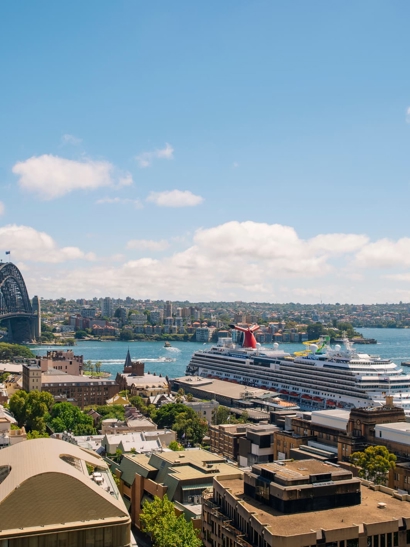
Green energy sources
To service these facilities with green energy, dedicated nuclear plants should not be ruled out, Duffy believes, both to generate electricity that could be used for OPS services and to produce carbon-free e-fuels for ships. These generators could be installed on floating offshore production facilities, he suggested, using modular reactors based on thorium salt, which he said has inherent safety advantages over pressurised reactors and which are capable of being scaled down to the power levels required for port use.
A more immediate source of green electricity in Europe is likely to come from enhanced wind power provision in the North Sea. In April, five European energy ministers signed the ‘Ostend Declaration’, supporting four other nations that signed up in May last year. This commits their nations to “strengthen our cooperation to ensure affordable, secure and sustainable energy, while at the same time, continuing our efforts to protect the marine ecosystem” and they have set a target of 120GW of offshore wind by 2030, rising to 300GW by 2050.
Although it is not specifically related to the FuelEU Maritime requirements, the declaration was welcomed by the European Onshore Power Supply Association (EOPSA). Its President, Roland Teixeira, said in a statement that “this agreement is one more clear message that nothing stands in the way of quay electrification and port decarbonisation.”
OPS class rules
Lloyd’s Register was involved in projects to mover further into electrification, including one in which two ferries operated between Denmark and Sweden by ForSea Ferries were converted from diesel-electric to battery-electric. They operate across the 4km Øresund Channel with deck-mounted 4MWh battery packs that are charged for 6-9 minutes on both sides of the channel, using four automatic ‘charging robots’. According to an assessment published in April by ABB, whose supply included the batteries and shore-side charging station, the conversions have so far reduced ForSea’s CO2 emissions by over 37,000 tonnes, Lloyd’s Register’s rules for OPS came into effect in July 2015, when they were added as a new chapter to its ship rules. A key benefit that an OPS notation could bring for a vessel equipped to use a port’s shore power infrastructure is that it would reduce the number of questions and checks that a berthing manager would have to raise before allowing it to connect, Duffy believes. “We want those shore connections to be easily available for everybody,” he said. Bollerman agreed. “Shipowners are not going to invest to ready their ships for shore power if they spend three hours connecting”.
The rules were reviewed last year to confirm their applicability in the face of increasing interest in OPS, Duffy said, pushed by legislative developments and pulled by industry demand, especially from the cruise sector.
Commercial pressure
But other sectors are also looking at the benefits of operating OPS-compliant ships to meet anticipated pressure from charterers concerned about their Scope 3 emissions to meet their ESG policies, he added. These relate to the GHG emissions of third-parties involved in their commercial operations so charterers are likely to favour vessels that are equipped to minimise their own GHG emissions. This could lead to retrofits on the existing fleet, he predicted.
There are still challenges to overcome, however. For example, there is no internationally-agreed standard design for connectors, especially for high-voltage installations, and uncertainty over future technology developments can also impact on decisions made now for installations that will operate for years to come.
A port might plan on the basis of its current vessel throughput when it sets the scope and capacity of its OPS infrastructure. But if more or bigger ships than expected use the port, the cabling may have to be supplemented or replaced in just a few years’ time. “In the long term, it's cheaper to put the bigger cable in now,” Bollerman advised.
Shipowners have similar dilemmas; they might fit fuel cells and battery energy storage with a particular capacity, with electrical systems rated to match, but then find when those sytems come up for replacement that technology has improved and systems with significantly higher outputs are available. Unless the capacity has been considered during design, expensive modifications will be needed to take advantage of those developments.
Of course, there is an alternative to using OPS, as the EU regulation recognises: zero-emission fuels and equivalent technologies. The possibility that shipowners might choose that solution may deter some ports from investing in OPS, fearing that it may be a short-term solution, which is something the cruise industry in particular is concerned about, Bollerman said.
But it will all come down to money, Duffy predicted. Future fuels will inevitably be more expensive than those used today and many will require renewable energy as part of their manufacture, so using them in port is never going to be cheaper than plugging into the grid.
If he is right, the world is on track towards long-term investments in OPS for regulatory, commercial, environmental and economic reasons and finding answers to this article’s opening questions will be vital on that journey.
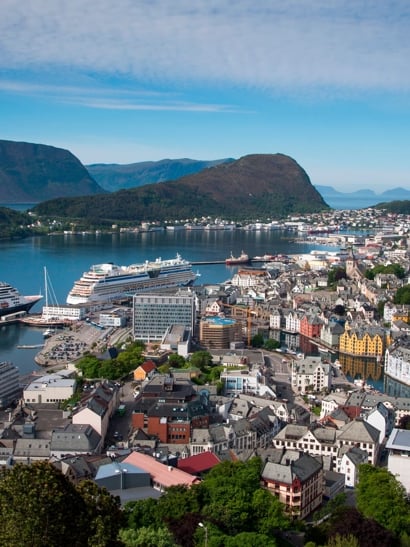
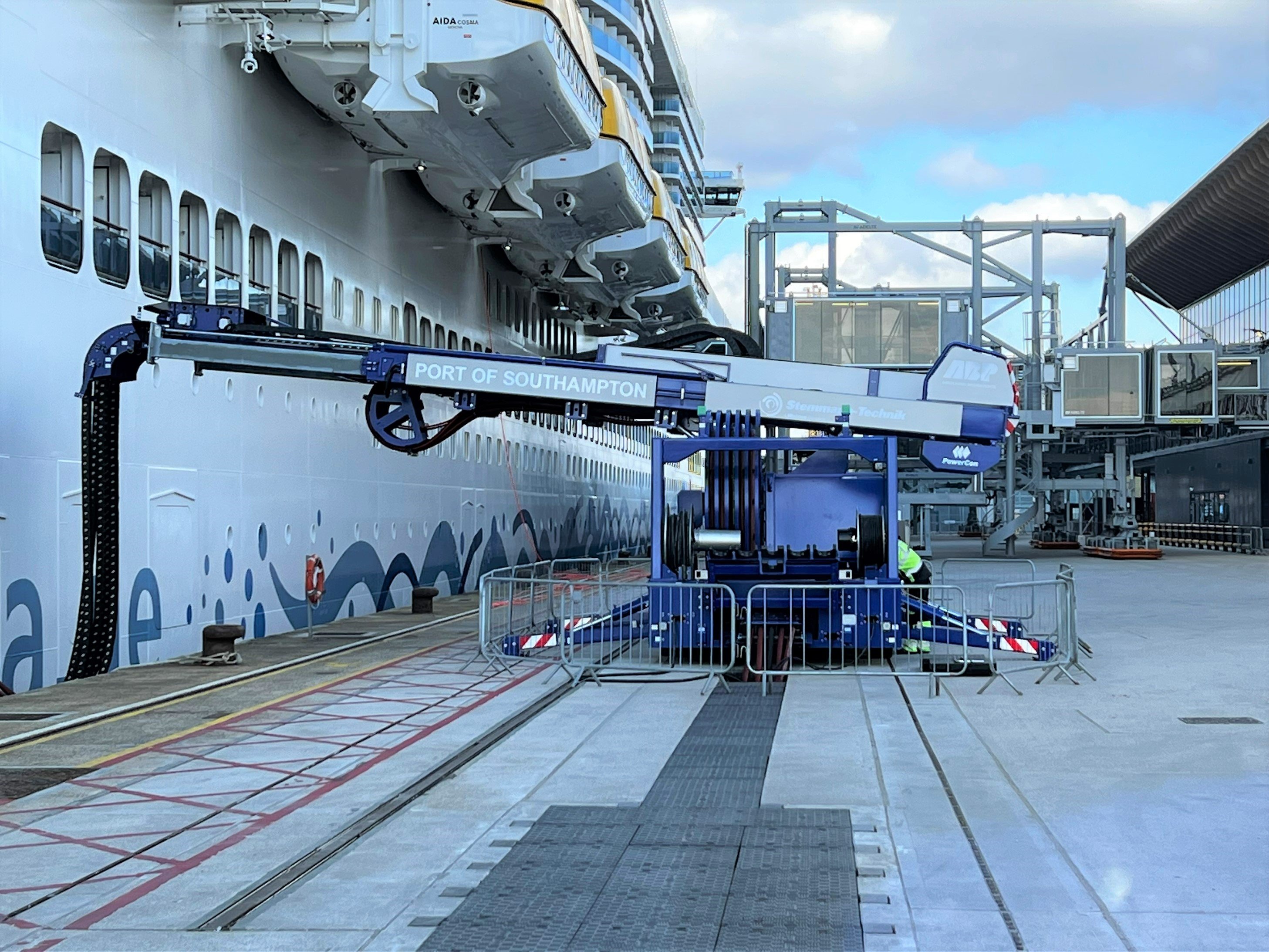
Shore Power at the Port of Southampton: What are the lessons from the first year of operation?
Rebekah Keeler, Head of Cruise, ABP
In April 2023, Associated British Ports (ABP), the UK’s leading ports group, celebrated the one-year anniversary of the first deployment of shore power technology at the Port of Southampton. Building on the port’s long-established reputation as Europe’s leading cruise turnaround port, this new infrastructure means that ships can plug in at the Horizon and Mayflower Cruise Terminals and achieve zero emissions at berth. With 35% of cruise vessels operating worldwide today and 88% of newly commissioned cruise ships being shore-power ready, port side shore power infrastructure is an important enabler to support the sector.
For ABP itself, it is an example of how clean maritime technologies can be deployed to support our customers by reducing their GHG emissions and improving port air quality, both of which are key strands of ABP’s net zero sustainability strategy, ‘Ready for Tomorrow’. Through delivering the project, ABP has learned many valuable lessons, including the importance of suitable port infrastructure, power and funding.
A key lesson has been that shore power technology needs to be uniquely designed for each port. For example, in Southampton, shore power cables are placed under the quay so that they don’t impact other operations which may be taking place at the terminals where cruise ships are berthed. This is key to making sure that the port can cater to simultaneous quayside operations happening at the same time, which for a busy port of its scale is a vital consideration. Another important factor for the long term is the ability to provide the power from a sustainable source. In the case for ABP’s shore power facility, the power supplied is supported by a green energy certificate.
But one of the bigger lessons has been the demonstration that shore power needs to be a multi-stakeholder endeavour. There is a clear need for governments and businesses to work together to deliver on shore power ambitions. At Southampton, the shore power infrastructure installation was only possible through co-investment with government, as there is elsewhere in Europe, for example under the ‘EU fit for 55’ package. Governments are not the only partners. Cruise Line International Association (CLIA) members have also committed to the goal of equipping all ships with the right technology so that they can use shore power and renewable energy sources at ports where they are available. Fortunately, tracking ports that have this capability has been made easier by the active onshore power (OPS) database launched by Cruise Europe, in conjunction with Cruise Baltic and Cruise Britain, which maps out ports that are either onshore-ready, or will be within five years.
Shore power will play an important role in helping to deliver global net-zero ambitions. Its effectiveness under the right conditions has been demonstrated by ABP’s successful rollout in Southampton. Over the coming years, it is expected the technology will continue to extend, as it helps to decarbonise global shipping supply chains if both industry and, crucially, governments can continue to adopt a partnership approach.






